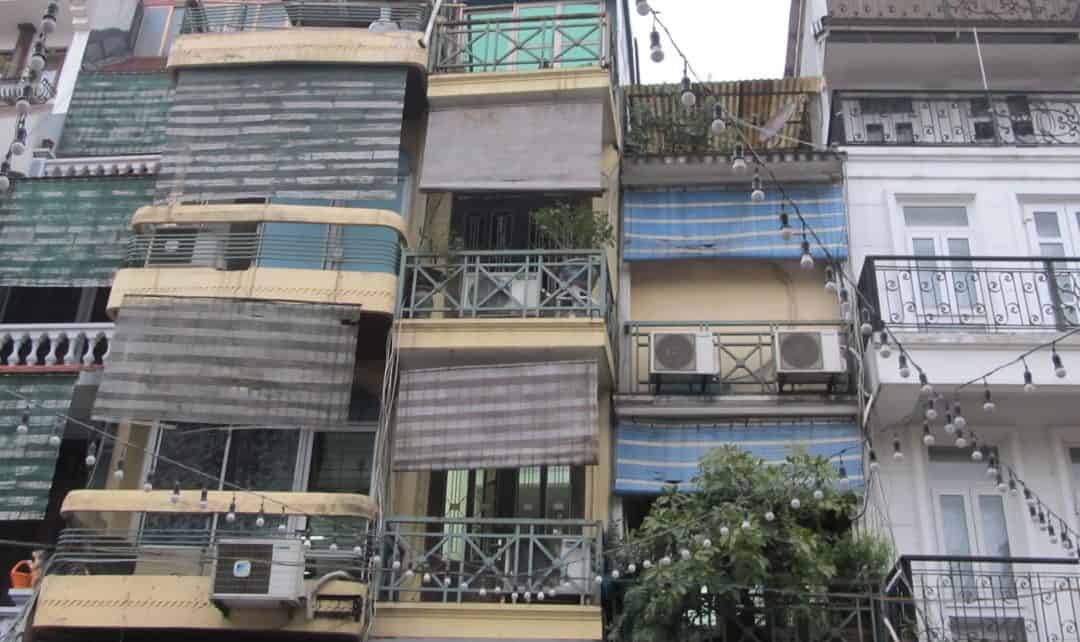It seems that property owners in Hanoi, Vietnam would go to any length (or height) to reduce their taxes. When the city government decided, centuries ago, to base the tax rate according to the width of a property’s street-facing facade (the wider the home, the more you paid) it only seemed natural that citizens would try to find a way around it.
They began building narrower and taller homes. Thus, the proliferation of what’s come to be known as tube houses (nha ong). Some are as narrow as six feets, and the house at No. 97 Hang Dao St. is just a little more than five-feet-wide. But what they lack in width, they make up for in depth, stretching back as much as 230 feet, and height – five to seven storeys high is not unusual.
It’s believed the first tube houses appeared on the scene as early as the 15th century. Today you can find many examples, both old and new, in the city’s Old Quarter with its maze of streets dating back to the 13th century, many of them named for the products that were originally made and sold here, such as Basket Street and Silk Street.
Tube houses typically have concrete floors, walls (external and internal) made with burned clay brick, and no thermal insulation. The front of the home is generally where goods are sold and business is conducted. The private family quarters and the kitchen are usually at the back. The houses tend to be interspersed by courtyards, which allow light into the house as well as space for outdoor activities such as gardening. The older houses tend to be lower and were built of bricks “cemented” together with sugar-cane juice.
There are several more examples just beyond the 6.5- km-long Hanoi Ceramic Road, which is lined with dozens of colourful mosaics. Here the tube houses, many of them built quite close together, rise several storeys high and are painted in a variety of colours including pink, green, blue, yellow and red.
Many of Hanoi’s tube houses suffer from lack of repair. Some conditions are cramped and squalid, or lack basic facilities, and there has been talk of tearing them down. The eye-catching narrow homes have their supporters though, and there is hope among conservationists that a solution will be found to maintain these iconic structures for years to come.
Diane Slawych is a contributing writer for REM.



















